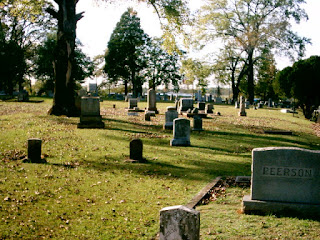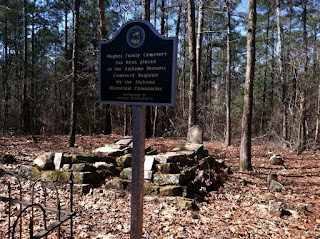If an investor was looking to rent to career oriented families, singles or even room mates, Centerpoint would be a great place to spend your investment money. The diversity of properties in the area is huge with plenty to choose from.
Centerpoint was hit just as hard, if not harder, than other areas when the real estate market crashed in 2007. As a result, the inventory of properties currently on the market is just as plentiful and diverse as the types of properties themselves.
As noted later, this area has a much higher rate of people who move into the area and stay. One of the reasons is that while Centerpoint butts up against Birmingham, it is not a part of Birmingham. Their schools are newer, more spacious and higher rated on the whole than those of Birmingham. Yet the drive to Birmingham is mere minutes - or seconds depending upon which part of Centerpoint you are in.
As the name would imply Centerpoint is centrally located with Birmingham to the south, Gardendale and Fultondale to the west, Trussville to the east and Pinson and Clay to the north.
According to the government census' Centerpoint currently has approximately 17,000 residents. At its peak it would boast of 22,784 in 2000. It covers approximately 8.1 square miles.
In 1816 the Reed family arrived in the area from North Carolina. 5 years later they would apply for and receive a land grant for the area now known as Centerpoint. From its inception, the area's only water source was the spring that runs through the middle of the town. Folks would hook up their wagons to their horses, drive to the spring, fill up their buckets and then drive the water back home. It wasn't until 1871 that Dave Franklin finally hit water by drilling. He then built a store out of local stone in front of the new well. That well served the community until 1957 when Cullen Scott finally found enough water to furnish the entire town and built the city water tank.
The town officially received Centerpoint as its name in 1900 but wasn't officially a city until March, 2002. From 1960 until 1990 Centerpoint was the largest unincorporated area in the entire United States. In 1900 when the city was named, it consisted of a blacksmith shop, a grocery store and a post office in addition to the houses scattered about the area.
Andy Beard of Centerpoint invented the coupling mechanism for railroad cars and later sold that invention for $10,000.
The 10 acres that now serve as the Reed Harvey Park was once the home place of the founding family. Throughout the generations they had steadfastly refused to sell any of it for fear that the natural spring, the gristmill, the beautiful trees and landscaping and the wooden bridge that crossed the spring would fall victim to "modernization" and would eventually become a housing development. However, when the last of the family grew too old to continue living on the property, they graciously sold it to the city in exchange for a promise never to develop that land or tear down the existing buildings. It is now a beautiful city park with fishing, picnic areas and other areas of interest for all to enjoy.
Below are a few shots of both the spring that kept the residents supplied with water for the better part of 50 years and a couple of shots of the wonderful pedestrian bridge that was built on the edge of the water. Every year the city hold a kid fishing competition here that is attended by huge crowds.
The building below was the family gazebo and it sits at the edge of the water. It is constructed of fieldstone gathered from the area.
The government numbers for Centerpoint are pretty attractive. The average renter is a family with less than 30% of the renters being single with no children. The median household income (from 2002) is $41,284 with a state median of $41,574. 31% of residents are renters with 26% being owner occupied.
The state of Alabama claims an unemployment rate of 6.6%. Centerpoint's number is 6.0%. Centerpoint also has a higher high school graduation rate than the rest of the state as a whole.
Only 20% of the residents are considered to be living in poverty. As mentioned in the opening paragraph, Centerpoint has a much higher number of residents that move into the area and stay than the rest of the state.
As for inventory, there is a lot of real estate to be bought in this area of all kinds. There are apartments, condo's, small starter homes, larger family homes and even a lot of large family homes. Lot sizes on average, are larger than the lot sizes in Birmingham. Most of the streets are lined with mature trees and the terrain is rolling hills.
The housing in Centerpoint typically consists of ranch and split level homes mostly built between 1957 and 2002 with some a bit older and many that are newer.
If I were in the market for rental property, this is probably where I'd begin my quest. I like the space between the houses, the well maintained streets and the fact that the residents take good care of their lawns. There is ample shopping within the city limits of Centerpoint and the school district is a good one. It would have my attention most certainly.
Centerpoint was hit just as hard, if not harder, than other areas when the real estate market crashed in 2007. As a result, the inventory of properties currently on the market is just as plentiful and diverse as the types of properties themselves.
As noted later, this area has a much higher rate of people who move into the area and stay. One of the reasons is that while Centerpoint butts up against Birmingham, it is not a part of Birmingham. Their schools are newer, more spacious and higher rated on the whole than those of Birmingham. Yet the drive to Birmingham is mere minutes - or seconds depending upon which part of Centerpoint you are in.
As the name would imply Centerpoint is centrally located with Birmingham to the south, Gardendale and Fultondale to the west, Trussville to the east and Pinson and Clay to the north.
According to the government census' Centerpoint currently has approximately 17,000 residents. At its peak it would boast of 22,784 in 2000. It covers approximately 8.1 square miles.
History
In 1816 the Reed family arrived in the area from North Carolina. 5 years later they would apply for and receive a land grant for the area now known as Centerpoint. From its inception, the area's only water source was the spring that runs through the middle of the town. Folks would hook up their wagons to their horses, drive to the spring, fill up their buckets and then drive the water back home. It wasn't until 1871 that Dave Franklin finally hit water by drilling. He then built a store out of local stone in front of the new well. That well served the community until 1957 when Cullen Scott finally found enough water to furnish the entire town and built the city water tank.
The town officially received Centerpoint as its name in 1900 but wasn't officially a city until March, 2002. From 1960 until 1990 Centerpoint was the largest unincorporated area in the entire United States. In 1900 when the city was named, it consisted of a blacksmith shop, a grocery store and a post office in addition to the houses scattered about the area.
Andy Beard of Centerpoint invented the coupling mechanism for railroad cars and later sold that invention for $10,000.
The 10 acres that now serve as the Reed Harvey Park was once the home place of the founding family. Throughout the generations they had steadfastly refused to sell any of it for fear that the natural spring, the gristmill, the beautiful trees and landscaping and the wooden bridge that crossed the spring would fall victim to "modernization" and would eventually become a housing development. However, when the last of the family grew too old to continue living on the property, they graciously sold it to the city in exchange for a promise never to develop that land or tear down the existing buildings. It is now a beautiful city park with fishing, picnic areas and other areas of interest for all to enjoy.
Below are a few shots of both the spring that kept the residents supplied with water for the better part of 50 years and a couple of shots of the wonderful pedestrian bridge that was built on the edge of the water. Every year the city hold a kid fishing competition here that is attended by huge crowds.
The building below was the family gazebo and it sits at the edge of the water. It is constructed of fieldstone gathered from the area.
The picture blow shows the original well house. The water in the well is so pure, the city has developed it's own water brand using water pulled from this well.
The state of Alabama claims an unemployment rate of 6.6%. Centerpoint's number is 6.0%. Centerpoint also has a higher high school graduation rate than the rest of the state as a whole.
Only 20% of the residents are considered to be living in poverty. As mentioned in the opening paragraph, Centerpoint has a much higher number of residents that move into the area and stay than the rest of the state.
As for inventory, there is a lot of real estate to be bought in this area of all kinds. There are apartments, condo's, small starter homes, larger family homes and even a lot of large family homes. Lot sizes on average, are larger than the lot sizes in Birmingham. Most of the streets are lined with mature trees and the terrain is rolling hills.
The housing in Centerpoint typically consists of ranch and split level homes mostly built between 1957 and 2002 with some a bit older and many that are newer.
If I were in the market for rental property, this is probably where I'd begin my quest. I like the space between the houses, the well maintained streets and the fact that the residents take good care of their lawns. There is ample shopping within the city limits of Centerpoint and the school district is a good one. It would have my attention most certainly.





























































